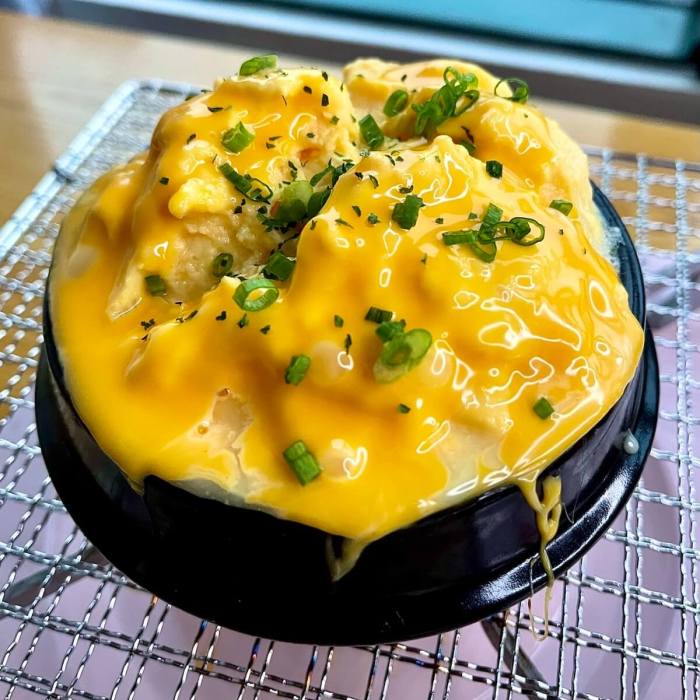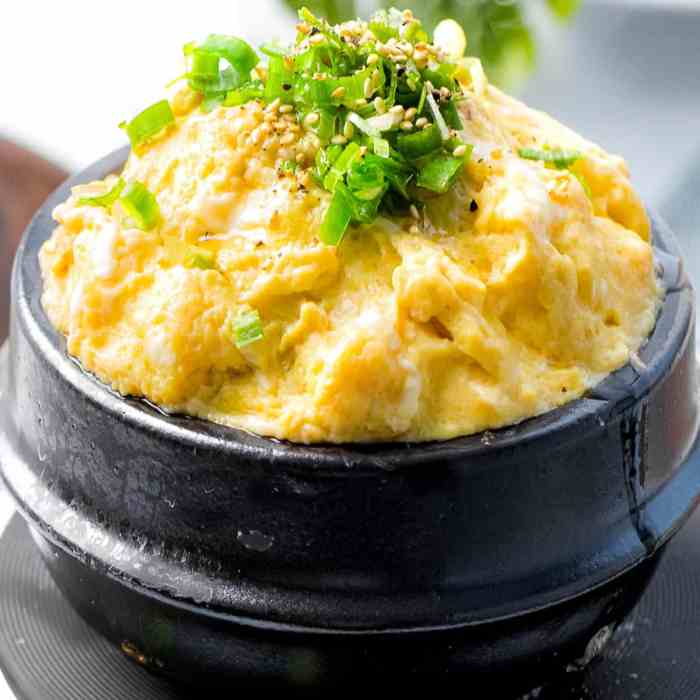How to cook egg korean style – Hey there! If you want to learn how to cook eggs Korean style, you’ve come to the right place. Let me break it down for you step by step.
Learn how to cook braised duck Chinese style with this step-by-step guide that includes all the essential tips and tricks. Whether you’re a seasoned chef or a beginner in the kitchen, this recipe will help you create a delicious and authentic Chinese dish that will impress your family and friends. Follow the link for the full recipe: how to cook braised duck Chinese style.
Ingredients:
To cook eggs Korean style, you’ll need a few basic ingredients:
-Eggs
– Soy sauce
– Sesame oil
– Salt
– Pepper
– Optional: vegetables like scallions or mushrooms
Instructions:: How To Cook Egg Korean Style

1. Crack the eggs into a bowl and whisk them together.
2. Add a splash of soy sauce, sesame oil, salt, and pepper to the eggs and mix well.
3.
Heat a non-stick pan over medium heat.
4. Pour the egg mixture into the pan and let it cook without stirring.
5. Once the edges start to set, use a spatula to gently push the cooked eggs towards the center, allowing the liquid eggs to flow to the edges.
6. Continue cooking until the eggs are set but still slightly runny in the center.
7. Optional: Add in chopped vegetables like scallions or mushrooms for extra flavor.
8.
Serve hot and enjoy your delicious Korean-style eggs!
Tips:
– Use a non-stick pan to prevent the eggs from sticking.
-Don’t overcook the eggs, as they will become rubbery.
-Feel free to customize your eggs with different vegetables or seasonings.
-Serve the eggs with rice for a traditional Korean meal.
What Do You Mean:
When we talk about cooking eggs Korean style, we mean preparing them with a flavorful mixture of soy sauce, sesame oil, and other seasonings to create a tasty and satisfying dish.
Looking to learn how to cook braised duck Chinese style? Check out this comprehensive guide on how to cook braised duck Chinese style for a delicious and authentic recipe that will impress your family and friends.
What Is Known:
Korean-style eggs are a popular dish in Korean cuisine, often served as a side dish or part of a larger meal. They are known for their savory flavor and silky texture, making them a favorite among egg lovers.
Solution:
By following the simple instructions and tips provided, you can easily cook delicious Korean-style eggs at home. Whether you’re craving a quick and easy breakfast or a tasty side dish, these eggs are sure to satisfy your taste buds.
Detail Information:

To cook eggs Korean style, it’s important to pay attention to the cooking process to ensure the eggs are cooked just right. The combination of soy sauce, sesame oil, and other seasonings adds depth of flavor to the dish, making it a delightful addition to any meal.
Describe In Depth:
Cooking eggs Korean style involves a unique blend of flavors and techniques that result in a dish that is both simple yet delicious. From whisking the eggs to adding in the seasonings and vegetables, each step plays a crucial role in creating the perfect Korean-style eggs.
Conclusion:
In conclusion, cooking eggs Korean style is a fun and flavorful way to enjoy this versatile ingredient. By following the instructions and tips provided, you can create a delicious dish that is sure to impress your taste buds. So go ahead, give it a try and enjoy your homemade Korean-style eggs!
FAQs:
1. Can I use other vegetables in Korean-style eggs?
Yes, feel free to customize your eggs with your favorite vegetables like bell peppers, onions, or spinach.
2. How can I make the eggs spicier?
You can add a dash of gochugaru (Korean red pepper flakes) or sriracha for some heat.
3. Can I make Korean-style eggs in advance?
While it’s best to enjoy them fresh, you can store leftover eggs in the refrigerator for a day or two.
4.
Are Korean-style eggs healthy?
Yes, eggs are a nutritious source of protein and other essential nutrients, making them a healthy choice for a meal.
5. Can I serve Korean-style eggs with other Korean dishes?
Absolutely! Korean-style eggs pair well with dishes like bibimbap, kimchi fried rice, or bulgogi for a complete Korean meal.
